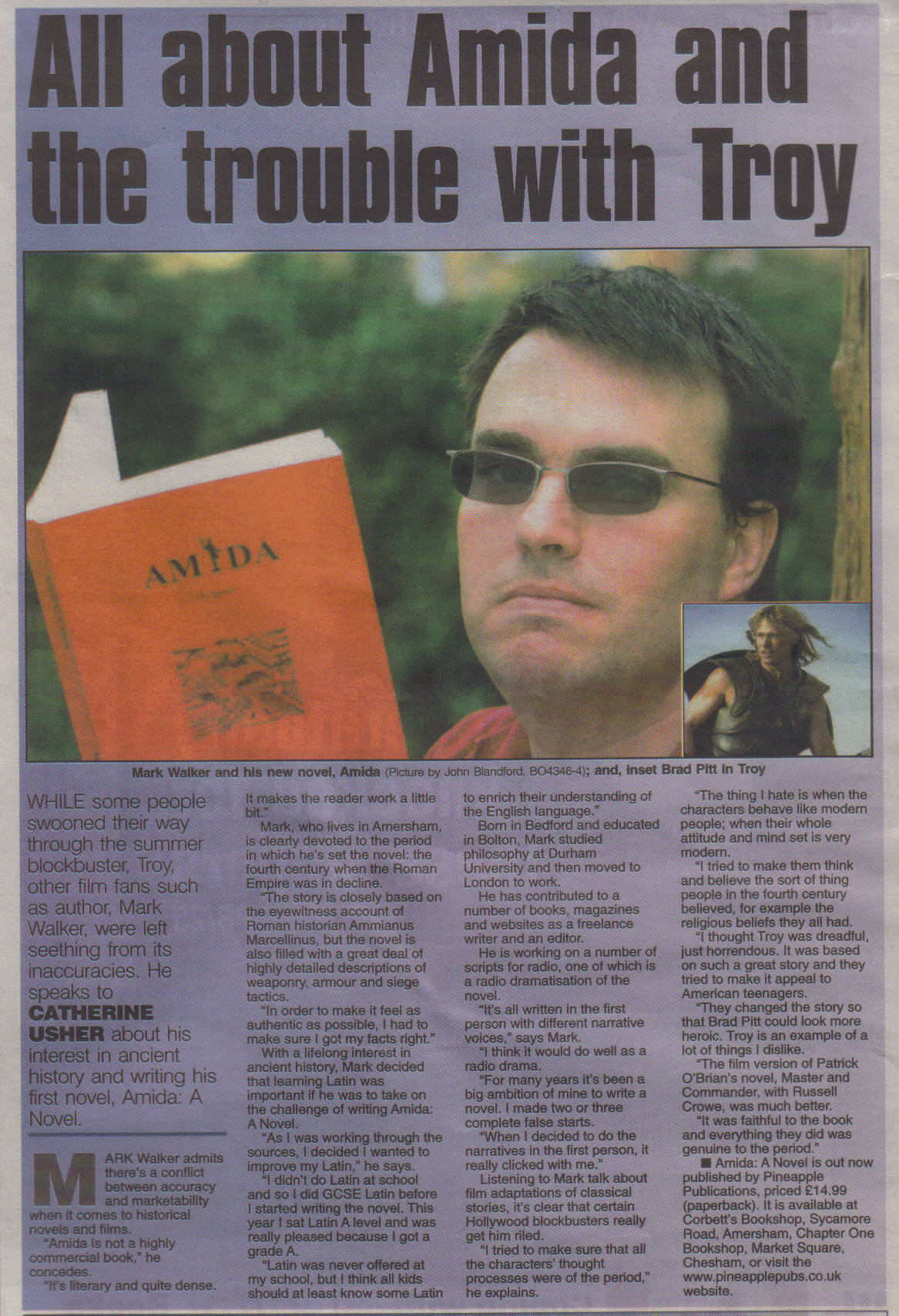
Vector is the critical journal of the British Science Fiction Association
Amida: A Novel reviewed by K. V. Bailey
Formally titled ‘a novel’, this is the story of the siege of Amida, which occurred in the 4th century AD when the forces of the Neo-Persian Sassanid empire found their expansionist surge southwards into what is now Iraq impeded by this Roman frontier fortress town. It is a straight, not alternative, history, based on the accounts of the contemporary historian Amianus [sic], but holds additional interest for a reviewer and readers of genre literature both for its form and for its exploration of the numinous experiences of many of its characters. The narration of these experiences, as well as the progress of the siege, is through first-person documentation: letters, exhortations, sermons, soliloquies, recounted dreams and visions. There are passages of dialogue between the garrison commander Horatius, last of his legendary line, and Lars Familiaris [sic], the line’s household god; and there are manifestations of the deific entity Mithras. Here, then, is a strand of metaphysical and often fantastic imagery woven into the historic action, episodes of which are actually observed and recounted by the ghostly Persian ally, Prince Atrabates, battle-slain early in the story.
The plot pivots around several personal involvements: the avenging of Atrabates; the hostility existing between the Italian-Roman tribune Horatius and the Gallic-Roman tribune, Marcellus; above all, the love affair of Horatius and Helena, she being the wife of a Roman officer who has changed sides and is now in the Persian camp. Much of the progress of the siege is reflected in the letters between the lovers, carried through the lines by Helena’s maidservant. These, and such passages as Marcellus’s address to his troops, contain swathes of personal back-story, slowing down the main narrative but filling out the characters. Marcellus and Horatius are of different temperaments, Marcellus always on the offensive, Horatius favouring defensive tactics – that is until he mounts a foray to rescue Helena from a death sentence. The usages of ballista and siege tower are described in detail, the latter device having the final say.
Historically, the Neo-Persian Sasssanid empire did not last long, and Rome was in irreversible decay. Mark Walker so shapes his novel as to mirror the inevitable decline of great powers, giving expression to his theme particularly in the ‘Ecstatic Vision of the Future’ of the Mithraic High Priest, Magus. The revelation is that monotheistic religions of the dominating powers are exclusive and cruelly intolerant, while pluralistic faiths embracing a pantheon of gods, nymphs of the streams and forest-dwelling presences, are infinitely more tolerant, offering a joyful existence. Symbolically apt is the fantasised fate of the Lars [sic] figurine, plucked from the rubble of Amida by a mahout of the Persian elephants and eventually taken on to the Orient, where it speculates, “I may be accepted alongside all the strange gods of India [in] a place where every village and every household still has its own protecting deity.”

Back
to Pineapple Publications